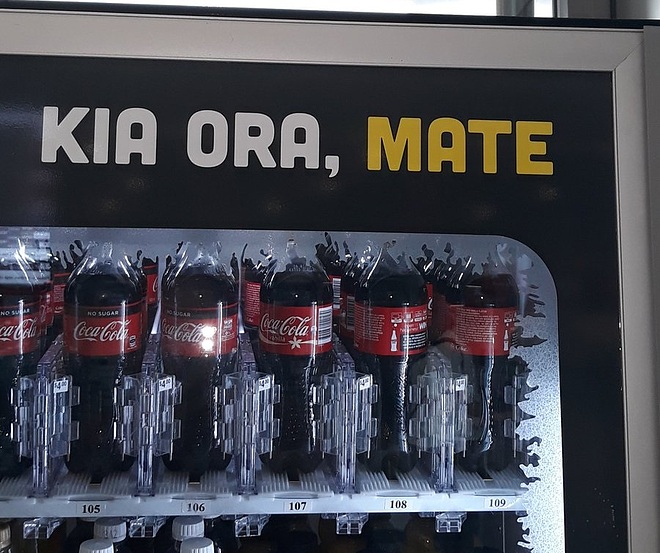by Alana Chalmers
“Choose a job you love, and you will never have to work a day in your life.”
This is one of those inspirational, yet anonymous, quotes that makes you want to hunt down that person and dump a pile of work on their desk. Or their beach towel. Because they probably have some sweet gig that doesn’t include a desk or deadlines.
Managing translation at a large company can be high stress, fast paced, and unrelenting. But it’s also challenging and fun, and you meet the best people doing it.
What is it like to manage a translation process? Well, it’s really not that different from managing an editing process.
Here are some common phrases you might hear if you manage translation.

“It’s just a few words”
This phrase strikes fear and irritation into the hearts of translators. Why? Because these “few words” could take up your entire afternoon. Some problems you might encounter include the following:
Missing information: If the text is for the web or for an app, it could include user interface terms, such as “submit”—which I’ve seen translated in two ways, with two meanings; as “soumission” and “soumettre la commande.” In the first instance, the user moves to the next page; in the second, the user completes a form. But if the client has not provided the linked material, how can you know which translation is correct? Context is key!
Missing screenshots or images: This is a common one. There are images with text in the project, but they haven’t been translated. The job isn’t finished until all the text is translated.
Wrong document: The text wasn’t final, and there are some changes. Of course, it’s already being translated. Gah.
Miscellaneous fun: They forgot to send you the text and have left for the day. Or they sent it to another person. Or the text is unclear or wrong (did it skip past editing?!).
Ask a few questions
It’s hard to completely avoid these well-meaning but troublesome requests. But if you ask some questions when you receive translation requests, you at least know what you’re dealing with.
Is the text final? I once sent a super rush translation request for seven pages about a new product. Turned out, I had the draft pages and the whole request had to be redone. We missed the deadline and wasted time and money.
Have I been sent any images? Yeah, no, seriously. I need those. Screenshots? Images with text? They all need to be translated.
Have I skimmed through the text? Have at least a quick look so you can anticipate potential problems or questions. If you’ve been given reference documents, send them to a professional who uses translation memory software to translate terms consistently.
Is it my turn? You also learn who your “trouble people” are, and can plan accordingly. If you’re on a team, take turns with the crappy requests.

“I translated it myself”
Whyyyyyyyyyy? Translation is a profession, and you can even get a degree in it. Yet, this is still pretty common. Google Translate has improved a lot, but it still can’t quite get all of the nuances of language and culture.
Using a machine translation or the dictionary can lead you down the path of some rather odd translations.
For example, Bretagne and Grand Bretagne aren’t the same as Britain and Great Britain.
Je cherche…personne (I’m looking for…no one) isn’t a great translation for a directory search button.
Ways to avoid the dumpster fire
Part of being a translator is reminding people that translation is important, takes time, and is worth the effort.
You can be an advocate for translation where you work and build relationships so translation is seen as a priority rather than an afterthought.
Offer to talk about translation. Send out articles about language and translation.
Get involved earlier in the writing and design process. If you aren’t being invited to the right meetings, ask if you can join. You can help avoid problems at the end of the process.
When you give feedback, do it respectfully. Don’t assume your co-workers are hapless idiots who want to make your life miserable. Treat them kindly but firmly, because you want them to make better choices next time.
- If they missed their deadline, find out why. Maybe it was because they got approval late.
- If they published something in one language, remind them of your translation policy.
- If they’re new, explain why, how, when, etc. If they’ve got “senior” in their title, remind them why, how, when, etc. Adapt your feedback to your audience!

I see what you did there. Slow clap.
“It’s not brain surgery”
Though this phrase was one my team heard, it was also the motto of my translation team. We were a group of three, translating the work of 20+ technical writers. There’s always some disparity between writing and translation teams, but we were lucky to have a great manager to support us.
When we weren’t putting out translation fires, we had a lot of laughs. (A few hilarious translations came across our desks!) So, don’t lose your sense of humour or your mind. Words are fun, and unless you do super-serious medical stuff, no one will die.
These are some of the most common translation issues I deal with while managing a translation process, and the solutions that I’ve come up with over the years that work for the whole team. I hope these tips will help you enjoy managing the interesting, creative translation work that is out there!
Alana Chalmers is an editorial consultant and translator. She’s the current chair of the member services committee. You can follow her on Twitter at @chalmers_alana.
This article was copy edited by Ellen Fleischer.
